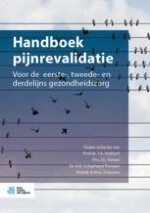Samenvatting
Psychologische factoren spelen een grote rol bij de kwetsbaarheid voor en het blijven bestaan van chronische pijnklachten en beïnvloeden pijnbeleving en het functioneren van patiënten met chronische pijn. In dit hoofdstuk wordt uitgelegd hoe onveilige hechting kan leiden tot disfunctionele coping met pijn en tot gebrekkig mentaliseren, wat pijnrevalidatie kan belemmeren. Depressie, angst, woede en boosheid en een gebrek aan positieve emoties kunnen voorafgaan aan pijnklachten, maar kunnen ook de pijn en het functioneren negatief beïnvloeden. Daarnaast zijn cognities als de taxatie van pijn, zelf-effectiviteit en ziektepercepties van belang. Een groot deel van het hoofdstuk is gewijd aan leertheoretische inzichten die verklaringen bieden en waarop cognitief gedragsmatige behandelingen zijn gebaseerd. Achtereenvolgens komen aan bod: operante conditionering, die de theoretische basis vormt voor graded activity; klassieke conditionering, die de theoretische onderlegger is voor exposure in vivo en relational frame theory waarop acceptance and commitment theory is gebaseerd.
